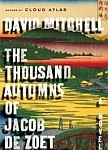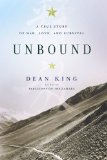|
|
Blog Headlines of the Week
Interesting Reading in the Interweb Tubes
Peeves and Provocations
Bookish Linkage
Nonbookish Linkage
The world needs an enema.
Mason Cooley, City Aphorisms, Eighth Selection
Puckish Pleadings Award: A cremation company has filed a trademark suit against another cremation company, alleging, among other things, it has “grave concerns” about its competitor.
A teacher in Australia is seeking $400,000 (Australian) in damages, alleging she damaged her larynx yelling at children.
What one Mizzou grad learned in law school. (I speculate that my oldest daughter, who is working on her second masters degree at Missouri, probably agrees with number 12.)
Lindsay Lohan’s Twitter: Your New Source of Legal Scholarship. Or, put another way, should Lindsay Lohan go to law school?
A North Carolina man is arrested for assaulting his pregnant girlfriend while she was in the hospital giving birth. And he’s probably surprised that she’s “tried for months to break up” with him. (via Jonathan Turley)
The never-ending series on why people hate lawyers: Fourteen-lawyer New York law firm files 80,000 lawsuits a year. Thank computer software for the ability to average more than 5,700 cases per lawyer.
Even when one sits in the prisoner’s dock, it is interesting to hear talk about oneself.
Albert Camus, The Stranger
David Mitchell’s Cloud Atlas is one of the most innovative books I’ve read. The problem it creates for him is that it sets a pretty high bar in the minds of many readers, myself included. So, let’s start with the fact that his latest novel, The Thousand Autumns of Jacob de Zoet, isn’t another Cloud Atlas. Let me then immediately add that shouldn’t keep anyone from reading it.
 The title character is a young Dutchman who, in the hopes of making a career and money to return home and wed his fiancée, ends up agreeing to work for five years at a Dutch East India Company trading outpost just outside Nagasaki, Japan. He arrives in July 1799, when Japan is a closed society and contact between the Dutch and the Japanese is strictly limited and controlled. The title character is a young Dutchman who, in the hopes of making a career and money to return home and wed his fiancée, ends up agreeing to work for five years at a Dutch East India Company trading outpost just outside Nagasaki, Japan. He arrives in July 1799, when Japan is a closed society and contact between the Dutch and the Japanese is strictly limited and controlled.
While de Zoet is the title character he is neither the sole nor central focus of the work. A variety of subplots gives ample pages to Orito Aibagawa, a Japanese midwife with whom de Zoet becomes infatuated, de Zoet’s fellow employees, and various Japanese interpreters and officials. This allows Mitchell to explore the setting and tell the story from a variety of viewpoints. As with good historical fiction, The Thousand Autumns of Jacob de Zoet has political and personal intrigue, good versus evil, a romantic infrastructure, and various individual trials and tribulations.
Mitchell occasionally uses some rather annoying devices, such as alternating phrases of a person’s thought with narrative text or external dialogue. The book also starts a bit slow but Mitchell manages to capture and keep the reader’s interest. Unfortunately, the last 10 pages or so cover too broad a span of time too quickly in comparison to the rest of the book. These flaws don’t doom the book. They only mean it isn’t perfect. Yet how many books are?
The Thousand Autumns of Jacob de Zoet is a great choice for a summer read — or to enjoy any other time of year.
The present is a battleground where rival what-ifs compete to become the future “what is.”
David Mitchell, The Thousand Autumns of Jacob de Zoet
I’m going to offer up another exhibit on RIAA’s shortsightedness on the original Napster. The first song or songs I heard from Everclear’s Songs From an American Movie, Vol. 1: Learning to Smile, released 10 years ago this week, were Napster downloads. I’d not heard anything by the band before I came across a couple of their records while checking out some more recent groups on Napster. Soon after, a 40-something guy was out buying this release by a post-grunge band. Not only was it my favorite album that year, it would take only a slight expansion of my Desert Island Disc list for it to appear there.
 The trio, formed and headed by Art Alexakis, clearly fits the post-grunge mold. While more commercially mainstream, the “angst-ridden, sober introspection typically associated with grunge became virtual requirements in the hands of post-grunge.” Introspective would describe many of the songs on this album. Yet the production is far from a trio-based hard rock sound and represents the band seeming to move from post-grunge toward what some call power pop. To some extent, it’s surprising this was the band’s second best-selling record. Longtime fans may have found it overproduced and, by adding musicians who weren’t part of the trio but had performed with them on the road, it often has a wall of sound feel. While there are occasional minor orchestration excesses, the production values of this CD are outstanding. The trio, formed and headed by Art Alexakis, clearly fits the post-grunge mold. While more commercially mainstream, the “angst-ridden, sober introspection typically associated with grunge became virtual requirements in the hands of post-grunge.” Introspective would describe many of the songs on this album. Yet the production is far from a trio-based hard rock sound and represents the band seeming to move from post-grunge toward what some call power pop. To some extent, it’s surprising this was the band’s second best-selling record. Longtime fans may have found it overproduced and, by adding musicians who weren’t part of the trio but had performed with them on the road, it often has a wall of sound feel. While there are occasional minor orchestration excesses, the production values of this CD are outstanding.
Said to be a concept album stemming from Alexakis’ divorce, its autobiographical nature is far broader. The songs Alexakis wrote for the album are powerful and demonstrate true songwriting talent. Songs From an American Movie ranges from childhood to formative years to courtship to marriage to children to break-ups but virtually every song expresses emotions and deals with situations almost everyone can identify with or comprehend.
Not to single them out over the other songs because the entire album is excellent, four in particular hooked me and have never let go. The opening cut, “Songs From An American Move,” and the final song, “Annabelle’s Song,” are about Alexakis’ daughter (you guessed it, Annabelle). Being the father of three girls, the emotions expressed in the songs still resonate with me. “Just the sound of my little girl laughing/Makes me happy just to be alive,” is the crux of the under 90-second opening cut while Annabelle’s song tells her, “You are my everything.”
Then there’s “AM Radio,” which is about life in the early 1970s and the reliance on AM radio, where, as the opening jingle from LA’s famous KHJ radio station says, “Portions of the day’s programming are reproduced by means of electrical transcriptions or tape recordings.” The song traces those years when AM radio was one of the few vehicles for new music and the music that transported us elsewhere. “AM Radio” then segues into what may be the best cover version of Van Morrison’s “Brown Eyed Girl” I’ve heard. Yet while there is a wall of sound aspect to Evercleark’s version, even with the driving guitars it remains true to the original.
Songs From an American Movie also contains the band’s top-charting U.S. single, “Wonderful.” The song is an exquisitely rendered child’s view of divorce. (Alexakis’ father abandoned the family, an event that is the subject of “Father of Mine” from 1997’s So Much for the Afterglow, with the refrain “My daddy gave me a name/Then he walked away.”) Here, the boy is tired of hearing how everything is or will be wonderful when he can see and feel the enmity between his parents, reminding them and us, “Promises mean everything/When you’re little and the world is so big.”
It’s insights like this that could cause me to rave about virtually every song on the album, its music and its lyrics. That, of course, is what made it a record of the year for me. And, as far as I’m concerned it is one of the records of that decade and far and away the best record by Everclear.
I can handle all the hell
That happens everyday
When you smile and touch my face
You make it all just go away
“Learning How to Smile,” Everclear, Songs From an American Movie, Vol. 1: Learning to Smile
Titling a book may well be an art form in and of itself. Undoubtedly, the goal is to not simply to attract a reader but to convey something about the book itself. I have no idea how much study or analysis went into naming Dean King’s Unbound: A True Story of War, Love, and Survival. It may, however, be one of the most intentionally titled books in some time.
 Unbound focuses on the women who participated in the so-called “Long March” of the Chinese Red Army to escape the Nationalist Army in 1934 and 1935, one of history’s epic feats. Of the 86,000 members of the Red First Army who embarked on a journey on foot of some 4,000 extremely arduous miles, 30 were women. Although less than 10,000 of those who began it survived the Long March, nearly all the women did. Unbound focuses on the women who participated in the so-called “Long March” of the Chinese Red Army to escape the Nationalist Army in 1934 and 1935, one of history’s epic feats. Of the 86,000 members of the Red First Army who embarked on a journey on foot of some 4,000 extremely arduous miles, 30 were women. Although less than 10,000 of those who began it survived the Long March, nearly all the women did.
The essential outline of the Long March is that in October 1934 the Red First Army’s enclave in southeastern China was surrounded by the Nationalist Army. Enacting a plan “justifiable only by utter desperation,” the First Army left the enclave, hoping to meet up with other Army groups and establish a new stronghold. Harassed by Nationalist forces and tribal warlords, the First Army ended up ultimately traversing 11 provinces over 12 months, including mountain ranges and uncharted bog land with areas akin to quicksand, before establishing a new base in northern China. King shows that simply acknowledging the women’s participation in an event that assured the survival of the Red Army and helped bring about Mao Zedong’s ascendancy to leadership in the Communist Party title merely scratches the surface. He goes beyond that to explore how it helped mark a remarkable change in Chinese culture and tradition.
As King notes at the beginning of the book, the title Unbound has both a literal and metaphorical meaning. Women had been welcomed to and active in the Communist Party, particularly in recruiting and propaganda roles. They saw the Party and what it promised as an alternative to servitude and destitution, a society where so-called child brides were little more than servants of the family to which they were sold or given. It was a society in which not only were women bound to the house and field, as a child their feet might well be bound in an effort to achieve the aesthetic ideal of a three-inch long foot.
Of necessity, much of the book covers ground more contemporaneously, although briefly, explored by Edgar Snow’s classic 1937 book Red Star over China or more thoroughly examined in Harrison Salisbury’s 1985 The Long March. Yet the full story of the sometimes ill-advised movements of the First Red Army and other units is necessary to not only place the women’s efforts in context but to understand just how much they endured in seeking to break free from the strictures of traditional society. King follows the women as they help shepherd porters, stretcher teams and wounded across raging rivers, through mountains so high many would die from altitude sickness and in the face of battles and air strikes. They also continued recruitment efforts among local peasants and tribes along the march.
This does not mean the women were considered fully equal. It was not uncommon for some to be relegated to traditional female tasks and roles, such as cooking or laundry duties. Still, the 90,000-member Fourth Army included a regiment of 2,000 women and, of the women accompanying Mao and the First Army, two would go on to serve on the Party Central Committee, one would become a provincial party chief, and one would eventually be one of the so-called Eight Elders of China, a group consulted on major national decisions in post-Mao China. Others became prominent leaders in arts and industry organizations. Many also would ultimately fall victim to the the Cultural Revolution.
In researching the book, King trekked through what was perhaps the deadliest portion of the Long March, the Great Snowy Mountains, with an average elevation of 14,500 feet, in the Tibetan borderland and then into the uncharted high-altitude bogs. By this point in the Long March, some nine months in, only 20,000 of the original 86,000 members remained, as did 27 of the 30 women (the other three were alive but had been left behind for various reasons along the way). Although facing the same hardships and diseases as the men, the women suffered some additional personal tolls.
Several women, including Mao’s third wife, were or became pregnant on the trip. There was, however, no way to care for infants, particularly given the type of terrain the Long March was covering. As a result, half a dozen children born along the route had to be left with peasant families or in abandoned villages with the remote hope someone would discover and care for them. For example, on the day she was born, Mao’s daughter was left in the care of an elderly blind woman, the only person who had not fled the village in which she lived. There was also the inverse. The lack of consistent food and dietary essentials, as well as the physical difficulty of the journey, meant some women suffered amenorrhea, the cessation of menstrual periods. In fact, some of them would believe that the trek across the Snowy Mountains triggered premature menopause, rendering them infertile.
Even if you strip away the mythology and propaganda since built around it, the Long March was extraordinary. Unbound is a worthy look at how a small core of extraordinary women on it were also engaged in an equally important and difficult struggle against cultural traditions.
Life as a woman in China was a constant imprisonment or worse. Revolution meant jailbreak.
Dean King, Unbound: A True Story of War, Love, and Survival
|
Disclaimer 
Additionally, some links on this blog go to Amazon.com. As an Amazon Associate I earn from qualifying purchases. There is no additional cost to you. Contact me You can e-mail me at prairieprogressive at gmaildotcom.
|










